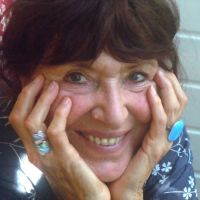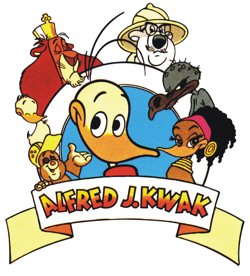Annet Kossen: Difference between revisions
| Line 53: | Line 53: | ||
Her books were compiled on her [[wikipedia:YouTube|YouTube]] page, [https://www.youtube.com/channel/UCbGyMEqILbCyY9s_VWdpYMg Annet verteld] (literally "Annet tells"), with the assistance of her cousin, Michiel Jongeneel. These books were turned into videos and narrated by Kossen herself. | Her books were compiled on her [[wikipedia:YouTube|YouTube]] page, [https://www.youtube.com/channel/UCbGyMEqILbCyY9s_VWdpYMg Annet verteld] (literally "Annet tells"), with the assistance of her cousin, Michiel Jongeneel. These books were turned into videos and narrated by Kossen herself. | ||
She also began reading her books at a primary school in Vledderveen, De Heidehoek, where she adapted the stories into puppet shows. Over time, she began giving painting lessons to some of the children and eventually started a painting club at her home for up to seven girls, known as ''De club van de Zeven Penselen'' (literally "The Club of Seven Brushes"). She continued this club for several years until her students moved on to middle school. | She also began reading her books at a primary school in Vledderveen, De Heidehoek, where she adapted the stories into puppet shows. Over time, she began giving painting lessons to some of the children and eventually started a painting club at her home for up to seven girls, known as ''De club van de Zeven Penselen'' (literally "The Club of Seven Brushes"). She continued this club for several years until her students moved on to middle school.<ref name="Vledderveen" /> | ||
Annet Kossen was also a painter in the fine arts. Between 1992 and 2014, her work was sold through a gallery in the former monastery La Cartuja de Cazalla in southern Spain. | Annet Kossen was also a painter in the fine arts. Between 1992 and 2014, her work was sold through a gallery in the former monastery La Cartuja de Cazalla in southern Spain.<ref name="Website" /> | ||
==Works== | ==Works== | ||
Revision as of 17:04, 8 November 2024
| Annet Kossen | |
|---|---|
| Illustrator | |
 | |
| Annet Kossen's youtube profile picture | |
| Full name | Annet Kossen |
| Born | May 28, 1938 |
| Died | October 20, 2024 (aged 86) |
| Birthplace | Alkmaar, The Netherlands |
| Occupation | Illustrator Painter |
| Years active | 1964-2014 |
Annet Kossen (May 28, 1938 - October 20, 2024) was a painter and an illustrator. Born in Alkmaar. She was the illustrator to bring the originally French fairytale, Drakestail, to Herman van Veen's attention, which was the start of everything Alfred Jodocus Kwak.
History
New York
Kossen developed a passion for drawing from a young age. After completing mulo, she enrolled at Schoevers, studying office management and secretarial tasks—fields she disliked but pursued at her parents' insistence to learn a trade. She lived in Alkmaar until age 19 before relocating to Amsterdam. This education allowed her to secure work at Carré and Uitgeverij Querido.
In 1964, she moved to New York and managed the work of prominent young American illustrators, leading a successful company. During her time in America, she also briefly attended the School of Visual Arts, where she focused on painting. During this period, she received her first illustration commission, creating black-and-white illustrations for a cookbook for a publisher friend in New York. She later contributed several illustrations to the magazine Puffin Post.[1][2]
In 1973, she returned to Amsterdam with writer Rob Chrispijn, whom she married. She used her professional illustrations from America, along with other work, to create a portfolio for publishers. In 1977, publisher Lemniscaat commissioned her to illustrate a picture book called Repelsteeltje (Rumpelstiltskin).[1]
Alfred J. Kwak
Around this time, Kossen met Herman van Veen through her husband, Rob Chrispijn, who writes song lyrics, takes photographs, and manages lighting for van Veen’s productions. Van Veen, impressed by Kossen's illustrations, expressed interest in creating a picture book with her and asked her to find a suitable story as a foundation. Kossen reported struggling with imposter syndrom during this period, as she had not formally trained in illustration and was self-taught.
Kossen found inspiration in an old fairy tale, Drakestail, from The Red Fairy Book, written by [[wikipedia Lang|Andrew Lang]] in 1890. Lang adapted this story from the French tale, Bout-d'-Canard (literally "Duck Butt"), by Charles Marelle, published in 1888. She translated this story into Dutch for van Veen, who contributed some verses.
Before beginning a picture book, van Veen incorporated the story into a small stage play, created as a birthday gift for a friend of a Harlekijn Holland employee in 1976. Shortly after, in 1977, the director of the Residentie Orkest asked van Veen to develop a children’s musical production, prompting him to further adapt the story into a play, which premiered in February 1978.
Kossen’s illustrations were featured on the vinyl cover of the Alfred J. Kwak theater play, and following the play's success, a story book was published in 1979, with a revised edition in 1987.[1][3]
Kossen later expressed frustration over this period, feeling resentment toward Herman van Veen for appropriating Alfred Jodocus Kwak. Although she had no contractual agreement on ownership, she lamented missing out on shares of the profits generated by Alfred’s success. She was replaced by illustrators Harald Siepermann and Hans Bacher, who created a comic adaptation based on Alfred’s stage play adventure.[4]
Egel & Muis
Following Alfred's success, Kossen found it easier to secure illustration work. By the late 1970s, she had moved to Vledderveen, where she created book covers for children’s books and contributed illustrated stories to children’s magazines such as Okki and Ezelsoor.
She also developed a series of episodes about Egel & Muis (literally "Porcupine & Mouse") for the Dutch version of Sesame Street. In these episodes, Frank Groothof would narrate the story and perform songs written by her husband, Chrispijn, while Dutch Sesame Street characters Ieniemienie and Tommy provided commentary. Footage from these episodes was not preserved.
Comics for Egel & Muis were created for Okki and were later compiled by the publisher Casterman into the first two Egel & Muis books. Kossen was commissioned to create a series of 10 books.
Kossen often spent an entire year on each book, handling both illustrations and stories. The books comprised single-page stories, which required a significant number of sketches. She would sketch on transparent sheets, which she then traced onto watercolor paper with the help of a lightbox. Each page had to contain a clear punchline and maintain a strong compositional balance. Kossen was meticulous about the final result. Symbolic elements emerged naturally during this process.[4][5]
Despite this dedication, Kossen completed only three books in the 10-book series. She later revisited Egel & Muis in a picture book titled Egel & Muis: En de gestolen prinses, finding that writing was easier for her than creating comics.[1]
Other work
Her books were compiled on her YouTube page, Annet verteld (literally "Annet tells"), with the assistance of her cousin, Michiel Jongeneel. These books were turned into videos and narrated by Kossen herself.
She also began reading her books at a primary school in Vledderveen, De Heidehoek, where she adapted the stories into puppet shows. Over time, she began giving painting lessons to some of the children and eventually started a painting club at her home for up to seven girls, known as De club van de Zeven Penselen (literally "The Club of Seven Brushes"). She continued this club for several years until her students moved on to middle school.[5]
Annet Kossen was also a painter in the fine arts. Between 1992 and 2014, her work was sold through a gallery in the former monastery La Cartuja de Cazalla in southern Spain.[6]
Works
This list is incomplete.
Illustrator
Notes
References
- ↑ 1.0 1.1 1.2 1.3 van den Heuvel, Julienne (2006). Lexicon van de jeugdliteratuur: Annet Kossen. Antwerpen, Belgium: Garant.
- ↑ Uknown (22 July 2013). "Annet Kossen page on lambiek.net". lambiek.net.
- ↑ Schra, Emile (2015). Herman van Veen. Amsterdam, The Netherlands: Nieuw Amsterdam. ISBN 9789046818947. Page 238
- ↑ 4.0 4.1 Visser, Jacqueline (9 September 1994). "De ingekaderde vrijheid van de striptekenaar". Nieuw Kamper Dagblad (in Nederlands). Kampen, the Netherlands. Retrieved 8 November 2024.
- ↑ 5.0 5.1 Uknown. "Annet Kossen page on Vledderveen". vledderveendrenthe.nl (in Nederlands).
- ↑ Annet Kossen. "Annet Kossen's art portfolio page". annetkossen.nl (in Nederlands).
